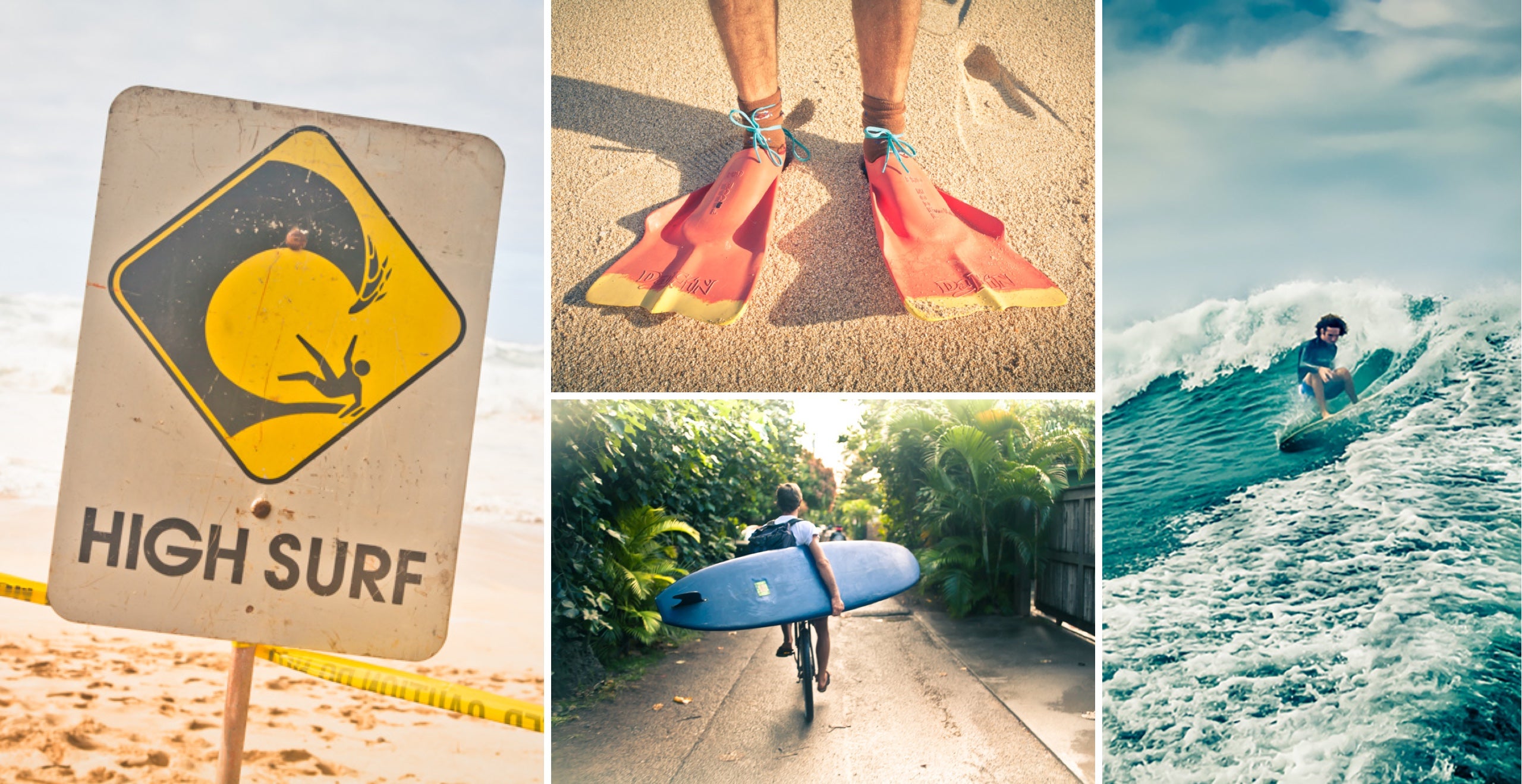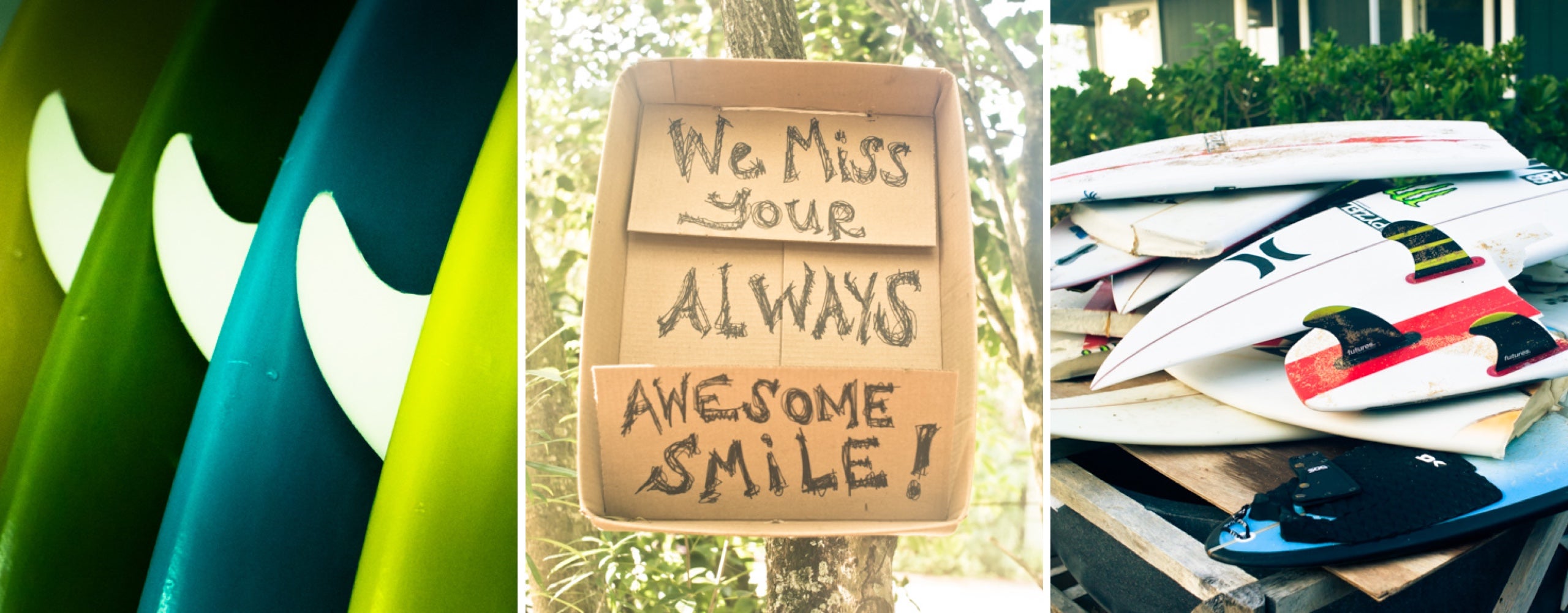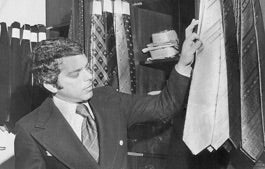
The RL Q+A: Justin Jay
The photographer and surfing aficionado on capturing Hawaii’s North Shore in 1,000 imagesFor the past 10 years, photographer Justin Jay has spent each December in Hawaii’s North Shore, capturing candid moments that epitomize surf culture. A decade later, he’s released the book HI 1K - 10 Years / 1000 Moments on Hawaii’s North Shore, a collection of 1,000 images that document the magic—and the community—of Hawaii’s coveted locale. Below, Jay takes us through some of his favorite memories … and pages.
Talk to me a little bit about the concept behind HI 1K. What inspired it?
I’ve been a fan of surfing since I was a kid growing up in Santa Barbara and have always been fascinated by the classic pictures and stories of Pipeline and Waimea. I’d been to Hawaii with my family on vacation several times, but never to the North Shore. In 2008, I got an idea that I wanted to shoot a project in Hawaii documenting the surf culture. Over the course of my photography career in NYC, rather than shooting traditional portraits, I have always strived to document my surroundings in a way that distills several days into a series of images that freeze time and convey a certain narrative. I wanted to document the North Shore with that same mindset and capture the surf culture in a way that I felt I hadn’t really seen before. My intention was to tell the stories of everything that happens before and after the surfers hit the lineup rather than photographing the actual surfing. I consciously chose to not focus on shooting action shots or water photography—there are some very talented guys doing that already, and I didn’t feel that I could add much to the genre. Instead, I focused on developing relationships and gaining access with the key figures of the North Shore scene in order to shoot candid moments. I’m a big fan of rock photographers like Jim Marshal and Bob Gruen. I wanted to use Bob’s classic backstage photos of the Sex Pistols and Led Zeppelin from the ’70s as a template for capturing candid iconic moments of surfers on the North Shore.

The title is an interesting one. Can you give us some background?
I wanted to come up with a title that emphasized both the scope and the concept behind the project. I’ve always loved the simplicity and friendly nature of Hawaii being abbreviated as HI—it looks terrific graphically, and it’s also a subtle nod that implies hello or aloha. It was also important to showcase the fact that the book contained 1,000 photos without having a title that was clunky and difficult to say. When the designers came up with the “HI 1K” logo, it just felt right. We struggled to decide what image to put on the back cover until I found a wonderful quote from legendary Hawaiian waterman Mark Cunningham. His description summed up the North Shore so beautifully that we chose to simply print this sentence on the back instead of a picture: “Everyone thinks of the North Shore as surf, surf, surf, but there’s a whole wonderful community that sends their kids across the street to Sunset Beach Elementary School, and there are births and deaths and marriages and divorces.”

Do you have a favorite image from the book? If so, what is it? And why?
The pictures from this project that are the most special to me personally are the images of people that are no longer around. While shooting this book, a lot of very prominent figures from the North Shore have passed away. I was fortunate to get to spend time shooting with Andy Irons, Buttons Kaluhiokalani, Jay Adams, Brock Little, Derek Ho, Joe Quigg, and many other legendary surfers that have all since died. These pictures mean a lot to me, and I’m so grateful to have had the chance to preserve a piece of their legacy. For instance, while I was searching through my archives and editing for this book, I stumbled across a photo that I forgot I had taken. It was a picture of Sion Milosky. Sion was one of the most well-respected big-wave chargers on the North Shore. I captured a moment with him and my friend Aaron Checkwood inspecting a photo on the back of his camera that he had just shot of Sion riding one of the biggest waves of the winter. That picture would be on the cover of Transworld Surf the following month. Just 90 days later, Sion drowned doing what he loved doing best—surfing the most dangerous waves on the planet.
I also cherish the pics where I’ve captured an unguarded and emotional moment that I’ve been able to preserve on someone’s behalf. For instance, I was shooting on the sand with Mick Fanning when he was waiting for a score to drop that would decide the 2013 world title. He was frozen in a sea of people waist-deep in water trying to hear the announcer. When he got the score that he needed for the title win, I saw him break down and have a brief emotional private moment. Then he took a breath, composed himself, and his whole face transformed into the purest elated scream I’ve ever photographed. This all happened in a matter of seconds, but it now exists forever in my archives. It was a very moving moment to have gotten to experience and document.

What is it about the North Shore of Hawaii that you find so inspiring? Talk to me a little bit about the community and the relationships you’ve found there.
Every winter, the global surf community coalesces around the North Shore. Despite all the hype, the history, the tourists, and the documentation, there is still so much about the place that is largely out of the public’s view. The North Shore has some of the most legendary waves on the planet. It’s where heroes are made and people die. But don’t expect to jump off a tour bus with your sunscreen and camera and get to truly experience the North Shore. Much of the real action is off-limits to the general public. It is a very special place to shoot because there is effectively no backstage area. Instead, there are 15 or so team houses that line the beach. Basically, the entire surf industry congregates around this half-mile stretch and hangs out on their lawns and decks. There are no bouncers with turtlenecks, and no velvet ropes guarding the entrance to the houses. Nobody has passes around their necks—access is entirely based on relationships and respect. People that belong at these houses either inherently know it, or they find out very quickly if not. I was very fortunate to have a few ambassadors that helped introduce me to some key players and open some doors for me. Each year I would return with a small box of signed 5x7 prints that I gave to the people that I had shot the previous year. It was my way of showing respect and appreciation for my access. When I rolled up to a team house, my first interaction with people was always me giving them something rather than me asking to take something. This bought me a lot of goodwill on the North Shore and enabled me to have access to shoot some very candid moments.
What was your editing process like? Was it challenging to edit it down to 1,000 images?
Editing and sorting images from 10 years of shooting on the North Shore was a massive undertaking. Thankfully, I had been editing selects each year along the way, so I had a pretty good idea of which images I really wanted to showcase. The real challenge was finding a way to sort and present 1,000 images in a cohesive manner for the book. Once we locked in the chapter titles, then I could start finding images that fit together even though they might have been taken several years apart. I found myself attracted to shooting many of the same themes every year, so I started to recognize groups of photos that conveyed the intensity of competition, the tight-knit sense of community, the notion of limited access, and quintessential Hawaiian detail shots like stacks of broken boards or piles of shoes at doors, etc. I had a very specific idea of what I wanted for some of the page layouts, but the book designers were also terrific at recognizing certain images that really complemented each other or made great montages or spreads. The relationship between the images on a page were sometimes just as important as the content of the individual images themselves.

What’s your connection to Ralph Lauren?
I got hired to shoot the Lauren family for a magazine cover a few years ago in Montauk. My wife is a makeup artist, and she has been working with Lauren Bush Lauren for many years. Since our sons are around the same age, Lauren suggested that we all spend the day together and make it a family affair. I like to keep the vibe of my shoots very relaxed, and hopefully this loose atmosphere translates into pictures that feel spontaneous and candid. Montauk was the perfect setting for the shoot. It was wonderful getting to shoot portraits of the Lauren family on the beach and have our kids playing together between shots. David and Lauren ended up using some of the pictures for their family Christmas card.
What does surf style mean to you? How, in your eyes, has Ralph Lauren inspired the elements of surf style?
Surf style has been a staple of American culture since surfing blew up in the late ’50s. The ironic thing about surf style is that while you’re actually surfing, unlike skateboarding or snowboarding, there really aren’t that many elements that allow you to showcase your style—you’re usually just wearing a pair of board shorts or a wetsuit. But as any surfer knows, the time that you spend actually riding waves is relatively small compared to all of the activities surrounding the surf lifestyle—traveling, planning, waiting for the right conditions, surf checks, changing in parking lots, swapping tales of your session, etc. It’s the love of this unique shared experience, the excitement of the search, and the connection with the ocean that is really what’s at the core of the surf lifestyle and the fashion that it has inspired. Ralph Lauren is a brand that has conveyed many of the same themes for decades, including individualism, the appreciation of the outdoors, and timeless American style.
HI 1K - 10 Years / 1000 Moments on Hawaii’s North Shore can be purchased at Hi1K.com.

- Courtesy of Justin Jay






